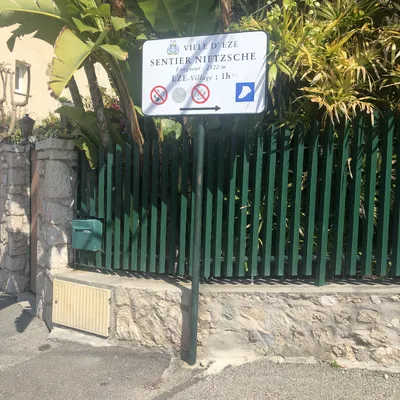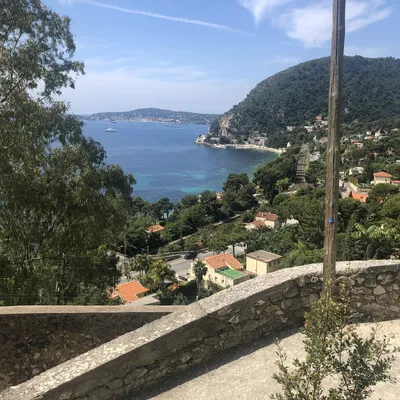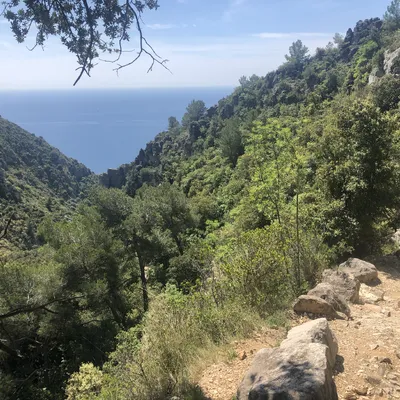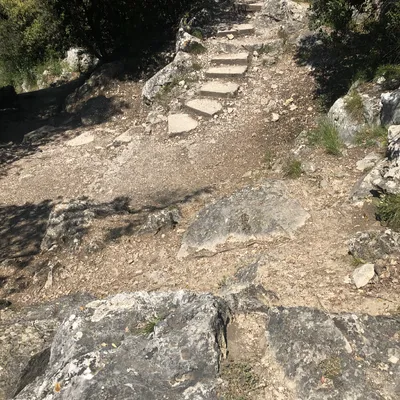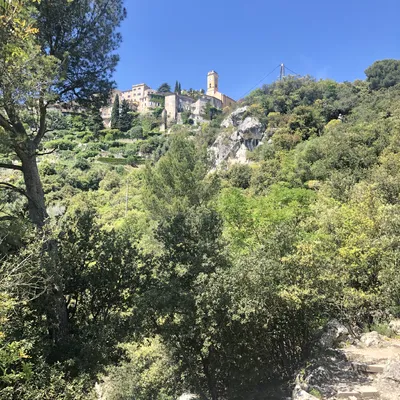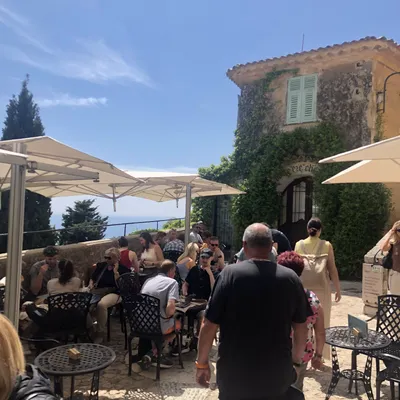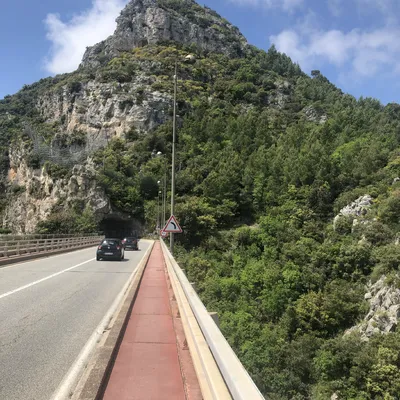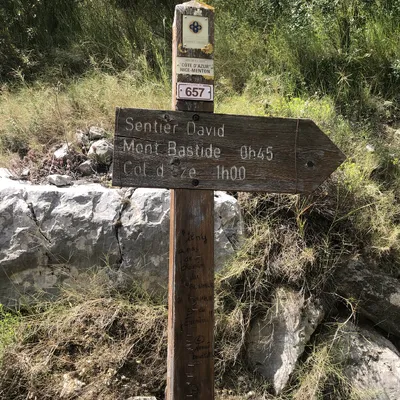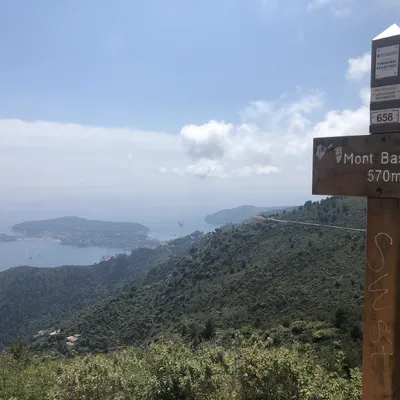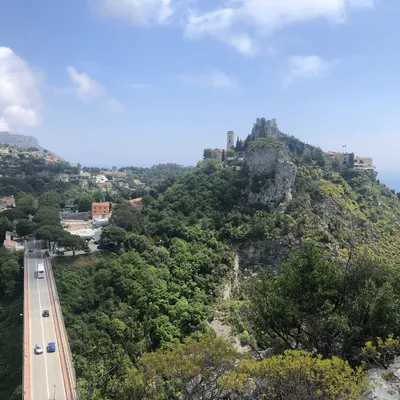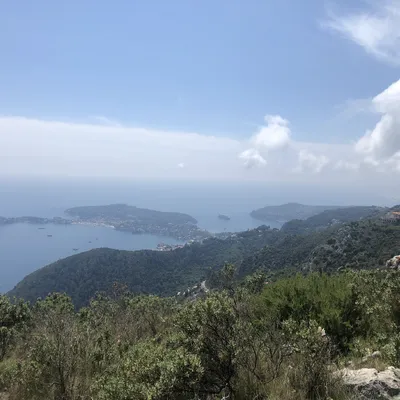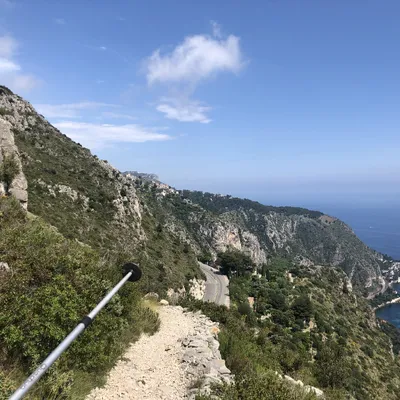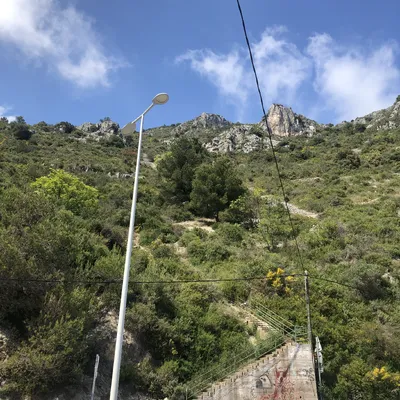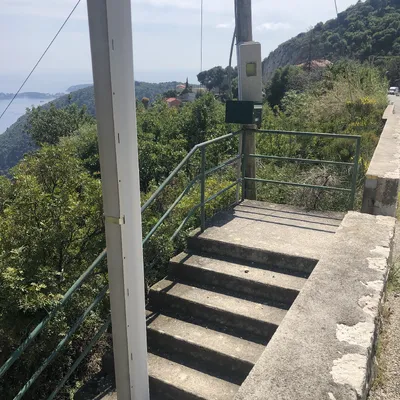Nietzsche and Mont Bastide trail, loop from Eze-bord-de-Mer
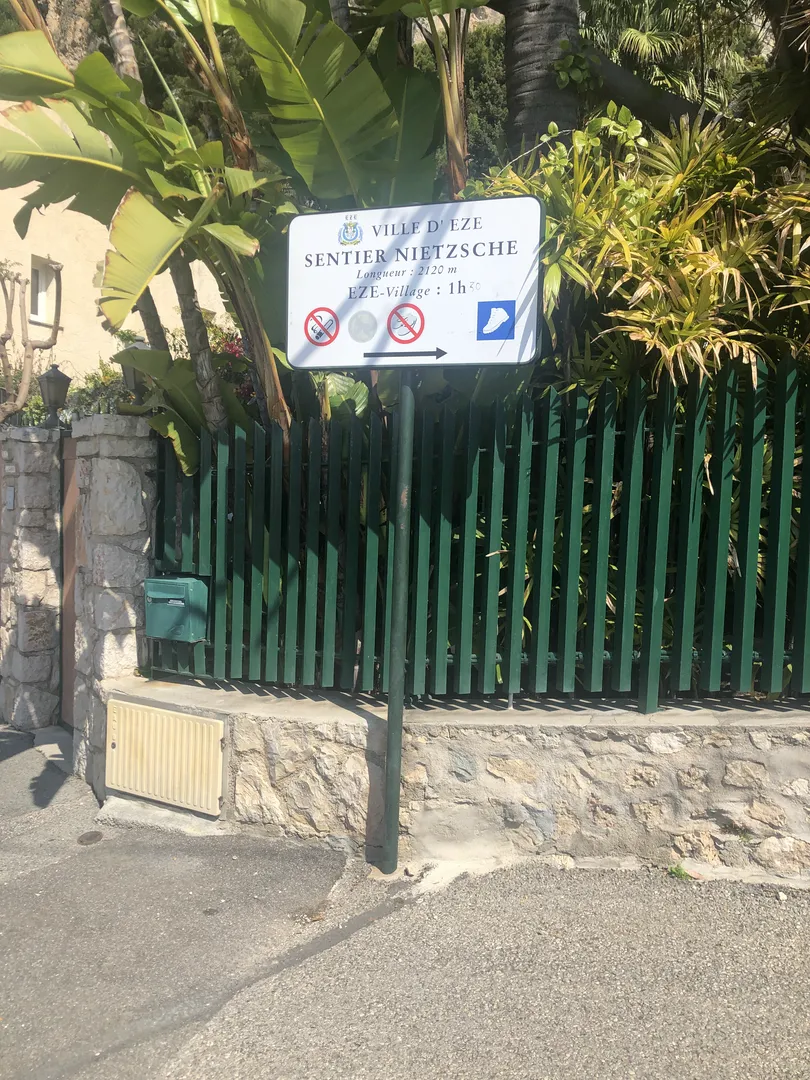
Access
The starting point is the Eze railway station, located at sea level.
For those coming from Nice, the best way to get there is by bus No 600 paying the normal urban fare. In town, it is best to catch the bus at the terminus (square Normandie-Niemen) because the bus tends to fill up at the next few stops, as it serves all the towns along the coast as far as Menton. Our stop is called Gare d'Eze.
.Introduction
Historic path dedicated to the German philosopher who loved to walk along it often. Followed by a visit to the picturesque perched village and on to nearby Mont Bastide, where there are ruins of a village that date back as far as 225 BC.
Description
From the station stop cross the road and proceed in an easterly direction for about a hundred metres. A sign (photo 1) indicates the start of the path and the expected walking time (1h) to Eze village.
With a series of hairpin bends, you immediately gain height and begin to enjoy the magnificent scenery on the coast below. The route, at first paved in asphalt and then in concrete, becomes a real path with numerous steps. The beautiful seaside villas give way to a dense forest, which provides shade, but does not refresh, which is why it is not advisable to make this excursion in summer. (photos 2-3-4-5-6)
After an hour or so of an ascent that is far from solitary (there are usually dozens of hikers in both directions and variously equipped: from those in flip-flops and swimming costumes to those ready for a real trek), one reaches the base of the rocky outcrop on which the village of Eze was built in prehistoric times. The castle, visible from afar, dates back to the 12th century. The medieval-style village is perfectly restored and its narrow streets are always invaded by tourists proceeding in single file in both directions. (photo7) And to think that until the 1920s, Eze was a modest farming village, gathered around its church and its patron saint: Saint Grato of Aosta!
The Nietzsche path ends just downstream from Eze, at the driveway entrance to the super-luxury La Chèvre d'Or hotel and restaurant, where the coachmen wait for the large cars to park them and unload the luggage of their wealthy clients. You can then choose whether to continue upwards and visit the village (which I recommend anyway if you have never been there) or descend towards the car parks and the busy road called the Moyenne Corniche.
Either way, you have to reach the Moyenne Corniche to continue towards Mont Bastide, which, behind the village of Eze, can be clearly seen on the left, after the viaduct. (photo8)
Then proceed over the bridge to the opposite end, where the path on the right begins (photo9), which enters the bush without any particular difficulty. (45')
From the top (photo10) there is a wonderful panorama of the entire bay, from Saint-Jean-Cap-Ferrat to Cap d'Ail, which hides the principality of Monaco from view. But towards the west, the view extends much further, over part of the Baie des Anges and beyond (if there is no mist). (photo11-12). In the midst of the vegetation, still on the summit, are a few stone walls, remains of what was once a village of olive growers and oil producers from the dawn of civilisation.
The hike proceeds westwards, in the direction of the Col d'Eze below, which in practice corresponds to a small dirt track at the side of the carriage road. Take the path that descends near the third carriage road parallel to the previous ones, without having to cross it. This path is a little steep, aiming to reach the Moyenne Corniche (photo13-14), which must be crossed to attack the descent again at a concrete staircase (Savaric path, photo15).
The path proceeds steeply until the return to the sea edge, crossing at the end a small maze of secondary residences enclosed by walls and hedges.
